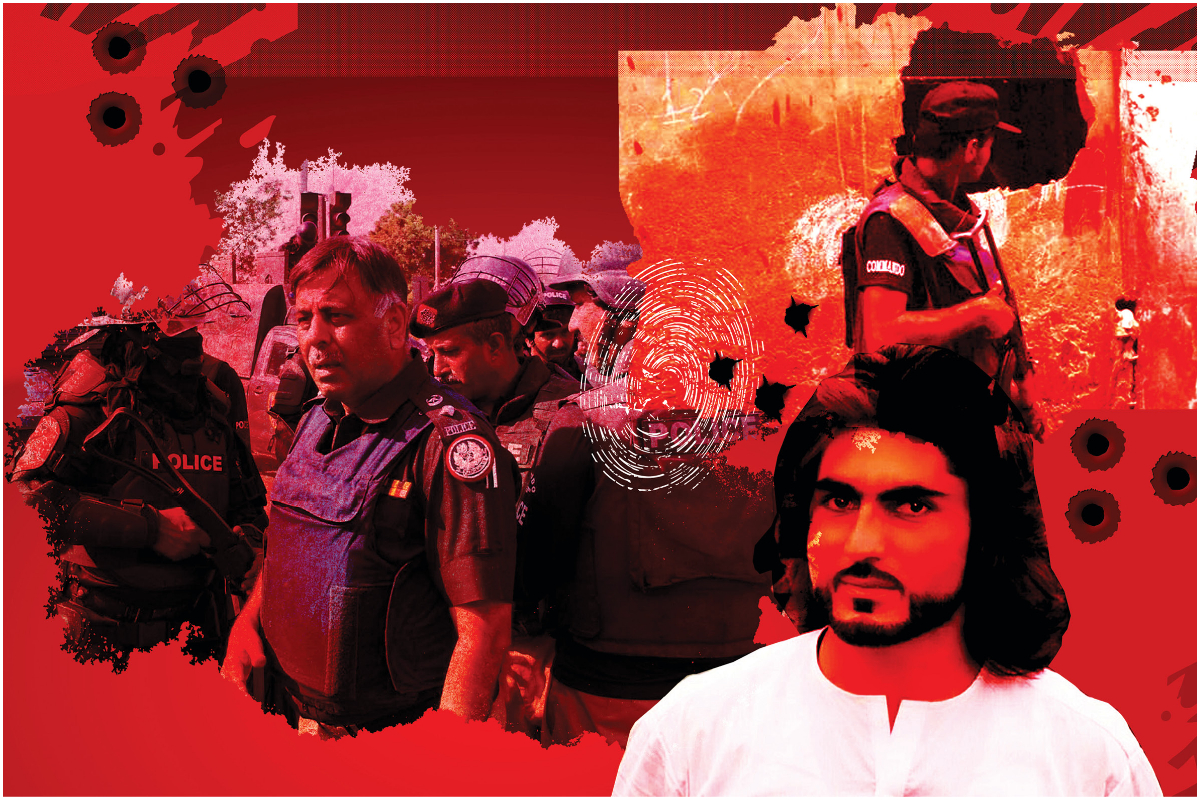
Rao Anwar Goes Free
For many, the court verdict is shocking, but well anticipated
KARACHI: The manner in which Rao Anwar, now a retired senior-superintendent of Sindh police (SSP), was brought to the Supreme Court of Pakistan on 21 March 2018 after absconding for over a month created suspicions that he will eventually walk free in the case pertaining to the extra-judicial killing of Naqeebullah Mehsud, an aspiring model from South Waziristan.
He was driven into the court premises in a black car with tinted glasses, through a gate designated for pedestrian movement, raising many eyebrows.
Five years later, on 23 January, an anti-terrorism court (ATC) acquitted him and his 17 subordinates in the encounter case that killed Naqeebullah and three others, citing “lack of evidence to prove their presence at the crime scene.”
Soon after the judgement – netizens started expressing their reaction of shock and disbelief on social media platforms. Some termed the verdict “surprising”, while others said it was not unexpected given Rao’s close links with some powerful state institutions.
Naqeebullah Mehsud, 27, owned a small cloth shop in Sohrab Goth area of Karachi. According to his family, he was fond of fashion modelling and had conducted numerous photoshoots.
He was among four people killed in an alleged encounter with a police team headed by Rao Anwar at the Usman Khaskheli Goth, on the city’s periphery, in January 2018. It happened at a time when protests had broken out in his native southern Khyber Pakhtunkhwa (KP) region up north over the military’s alleged excesses against local people during anti-terror operations.
The police initially tried to portray him as an Islamist militant linked with the Tehreek-e-Taliban Pakistan (TTP). When in a subsequent statement the TTP distanced itself from him, the authorities then started to paint him as a Daesh militant. His family disputed these claims, saying he had no links with any militant organization.
Reacting to the anti-terrorism court’s ruling, the counsel for Naqeebullah’s family, Jibran Nasir, tweeted: “Rao Anwar & 17 other police officials acquitted in Naqeebullah Mehsud case. A travesty of justice, but not a surprise in a system where every institution is rotting away like a dead body. Congratulations to PPP, Malik Riaz, ISI and MI; your asset is safe.”
By ‘asset’ he meant Rao Anwar.
In a detailed judgement, the ATC judge observed that the court could only act upon evidence presented before it, and that the judiciary couldn’t take the blame if prosecution/police failed in their duty. Despite being the main component of the criminal justice system, courts could only act upon evidence and material presented before them, which was to be collected by the executive, the judgement said.
“Since sufficient evidence in terms of reliability, cohesion and trustworthiness has not been collected nor produced, the right of benefit of doubt cannot be withheld even in high profile cases like this one,” the detailed judgement stated.
Police records that were compiled soon after the infamous encounter, which many see as a cover for Naqeebullah’s extra-judicial murder at the behest of the ‘institutions’, showed that Rao Anwar was involved in nearly 400 encounters that took place in Malir district. He had on several occasions acknowledged on-record that sometimes he was handed over the suspects by the Rangers and the intelligence agencies, asking him to “deal with them”.
A day before the decision of the case was due, a protest demonstration was held in front of the Karachi Press Club to demand an inquiry into Rao Anwar’s assets.
“A complaint was filed with the National Accountability Bureau (NAB) against Rao Anwar five years ago, but NAB has still not filed a reference to probe as to how a person of the rank of an SSP, who had joined the police as a low ranking Assistant Sub-Inspector (ASI), could make properties worth billions of rupees,” lawyer Jibran Nasir told Bol News.
“Was it because he is close to Asif Ali Zardari, part of the ruling family of Sindh? Was it because he is close to the real estate giant, Malik Riaz, for whom he used his office to vacate numerous goths so that he could expand his real estate empire? Was it because he is a favorite of the intelligence agencies of this country?”, he asked.
Describing the twists and turns in the investigation, Jibran said that an initial inquiry into the fake encounter, conducted by deputy superintendent police (DSP), Qamar, was never presented in the court on the plea that it had gone missing.
Narrating another aspect of the case which he described as astonishing, Jibran said that a call-data record (CDR) report and a geofencing report showed that Rao Anwar was present on the crime scene. But while one of the two police experts who testified in the court admitted that Rao Anwar was present, the other one denied it, thereby contradicting official evidence.
“When we filed an application for a third expert, that application was rejected,” he said. “And when that application went to Sindh High Court (SHC), the ATC, in order to forestall it, ruled that it had reserved its judgment.”
He said the judgement will be appealed before the SHC by the legal heirs of Naqeebullah Mehsud.
In its detailed judgement, the ATC also delved upon ‘popular emotions attached to the incident, and role of media.’
“Before appreciating the evidence, it is deemed relevant to observe (that) the instant case is one of the highly high-profile, widely published and infamous cases of its typical nature of high handedness and barbarity of the police whereby four persons were killed with declared fake police encounter. The infamous murder of four lives of persons, namely Naqeebullah, Muhammad Ishaque, Nazar Jan and Muhammad Sabir, in a staged police encounter case accentuated the barbaric style of the policing not only in our society but the same attracted the attention of the world, as the incident and case proceedings have gained enough of space in media, be it print, social and/or electronic”, the judgement stated.
The judgement quoted a newspaper editorial titled ‘Test Case’, published on 15 November 2022 in what it described as “a very high-standard, well-reputed English daily newspaper.” According to the editorial, as quoted by the court, “the trial of Rao Anwar for the murder of Naqeebullah Mehsud is a test case. It will determine whether the criminal justice system has the will to hold accountable top police official – now retired – whose terrifying reputation as an ‘encounter specialist’ long preceded this particular killing and yet he managed to thrive professionally.”
The judgement added that such viewpoints showed a “tendency to drive a judge in a particular direction.”
In April 2018, the then army chief, Gen Qamar Javed Bajwa, had during a visit to Makeen in South Waziristan agency had met Naqeebullah’s father, Haji Mohammad Khan, and offered his condolences over the death of his son. A subsequent statement issued by the Inter-Services Public Relations (ISPR) quoted Gen Bajwa as saying that the “army shall support all efforts to let him (Naqeebullah’s father) get justice.”
Haji Muhammad Khan died of cancer in December 2019. Many on social media commented that it was better that he was not alive when recent ATC ruling came.
Soon after the judgement, the Pashtun Tahaffuz Movement (PTM), led by Manzoor Pashteen, announced protest demonstrations across the country, starting January 25.
The PTM, which had existed in the southern Khyber Pakhtunkhwa (KP) province for nearly a decade since the military’s anti-militant operations started in the region, rose to prominence across the country in January 2018, soon after Naqeebullah’s extrajudicial killing, using it as a peg to hold country-wide protests which attracted huge crowds.
On his part, Rao Anwar issued a short statement to the media soon after the ATC judgement, saying: “damage was done to this country and this city by implicating me in this case; injustice was done to me; I want to get back my one year that I lost in this case; I want to serve this city.”
And he left the venue of the trial with the same pomp with which he had arrived at the Supreme Court five years ago. He was riding in a bullet-proof Sports Utility Vehicle (SUV), while the police mobile vans that escorted him were mounted by policemen who raised their hands to wave victory signs at the media as they left.
Catch all the National Nerve News, Breaking News Event and Latest News Updates on The BOL News
Download The BOL News App to get the Daily News Update & Live News.





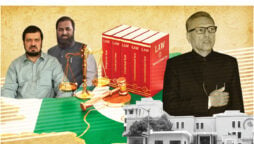
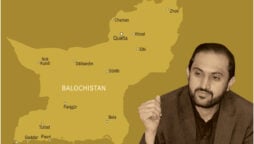
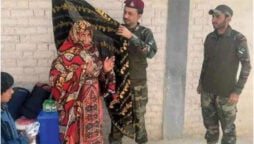
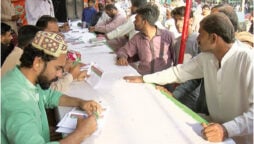
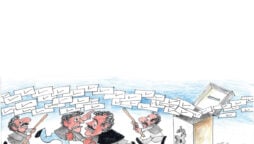
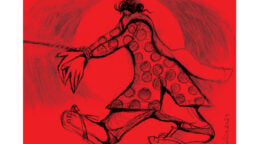

 Read the complete story text.
Read the complete story text. Listen to audio of the story.
Listen to audio of the story.